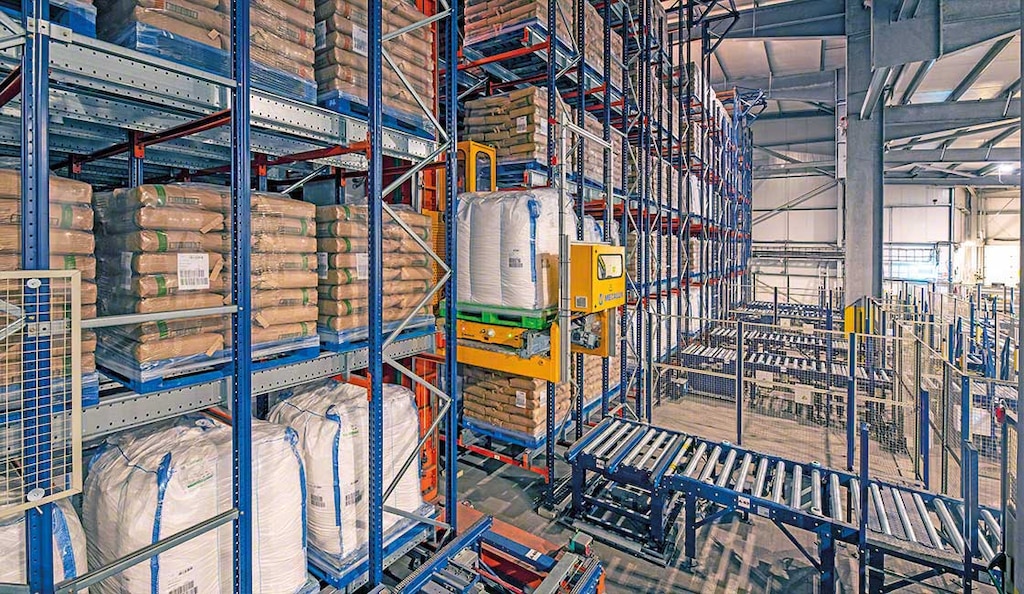
Supply chain examples
Supply chains and logistics are closely connected. While supply chains oversee the transformation of raw materials into finished goods, logistics focuses on their efficient, cost-effective delivery.
What are examples of supply chain activities?
Some supply chain examples fall into different categories, but by and large, all involve the set of processes required to manufacture a product and deliver it to consumers. These can be national or international, adding to their complexity. These are some examples of key supply chain activities:
- Raw material sourcing. First, the necessary raw materials are obtained and stored for manufacturing the final products in the supply chain.
- Manufacturing. Next, these materials are processed and transformed into higher-value goods, which may involve assembly, packaging, or other production tasks.
- Final distribution. Lastly, the finished products leave the production center and reach the end customer. This stage requires an efficient goods flow between production and shipping areas, covering inventory management and last-mile delivery.

Examples of supply chain models
How companies carry out their processes depends on their specific policies and needs. These are typical models that shape supply chains:
- Continuous-flow supply chain: Best suited for businesses that manufacture similar, high-demand products. To ensure smooth operations and prevent bottlenecks, it’s vital to maintain a steady stream of raw materials.
- Flexible supply chain: Common in industries affected by seasonality, where demand fluctuates throughout the year. A flexible model allows companies to scale production up or down as needed, while accurate demand forecasting helps optimize raw material procurement.
- Fast supply chain: Designed for trend-driven industries, this model enables companies to bring products to market quickly and capitalize on fleeting consumer trends. Speed and responsiveness are essential to staying competitive.
Each model has its own characteristics and delivers varying performance levels depending on the type of supply chain established in the business ecosystem.
How to plan a supply chain
Supply chains that run smoothly achieve this by following five crucial steps:
- Planning. This process addresses demand forecasting and coordination between production and suppliers to guarantee that a company can meet its customers’ needs. It also anticipates future distribution requirements and focuses on storage and inventory management.
- Procurement. A central element in any supply chain is sourcing raw materials or finished products. Both require forming partnerships with business partners and involve logistics costs.
- Manufacturing. Production times need to be considered because they affect a company’s supply chain, whether it handles manufacturing itself or not.
- Distribution. This phase can be carried out internally or through logistics service providers. In either case, the goal is to ensure that items reach stores and end consumers efficiently.
- Reverse logistics. Although returns can be minimized through cutting-edge logistics solutions like a warehouse management system (WMS), they’ll always be a part of the business. While often overlooked, planning how products will go back to the warehouse significantly impacts customer satisfaction.
Guaranteeing supply chain effectiveness
When it comes to purchasing products, consumer expectations are higher than ever. This is why inventory management — one of the main supply chain links — must be perfectly aligned with other departments.
Interlake Mecalux’s Easy WMS supports global and interconnected supply chain management, providing complete control over operations. Designed to oversee medium-sized and large facilities, this software solution integrates with the leading ERP systems on the market. It supervises both manual operations and automated warehouses, ensuring comprehensive, real-time inventory traceability.
Meanwhile, companies with multiple warehouses and sales points can unify their supply chain with Interlake Mecalux’s Easy DOM distributed order management system. This cloud-based software optimizes the selection of order fulfillment points within warehouse and distribution center networks, responding to the most complex omnichannel logistics.

Real-world supply chain management examples
The Mecalux Group has been developing cutting-edge solutions to drive its clients’ supply chains for over 55 years. Here are some examples:
- British Sugar. The leading sugar manufacturer in Great Britain and Ireland is an example of the Internet of Things (IoT) in the supply chain. It connected its factories with broadband service to enhance automation in addition to implementing Easy WMS and the Automated Pallet Shuttle system with a stacker crane in its Wissington (UK) plant.
- Dexel. This subsidiary of Sika France — a manufacturer of adhesives, sealants, and soundproofing solutions — prioritizes its raw material supply chain. It operates two warehouses in Salles-du-Gordon (France), with its 32,272 ft² facility dedicated to storing these goods.
- Saar Originia Foods. This Zaragoza (Spain)-based producer of deep-frozen vegetables — an example of a food supply chain company that exports 60% of its production abroad — manages its automated warehouse with Easy WMS. The system ensures traceability for 22,500 pallets of raw materials and finished products stored at -13 °F.
- ALPLA. As a leading global packaging solutions provider, ALPLA promotes the lean methodology in its supply chain. The company employs automated pallet conveyor systems and pallet elevators to connect its warehouse with its production plant in Golborne (UK), moving 2,500 pallets without halting operations.
Transform your supply chain with Interlake Mecalux
Innovation is already part of global supply chains, thanks to new technologies designed to improve all processes. For years, the Mecalux Group has developed technological projects relating to warehouse management, applying the results to maximize its clients’ efficiency and profitability. Want to know how Easy WMS and our other logistics solutions can optimize your supply chain? Don’t hesitate to contact us. One of our storage specialists will give you personalized advice on transforming your facility.
